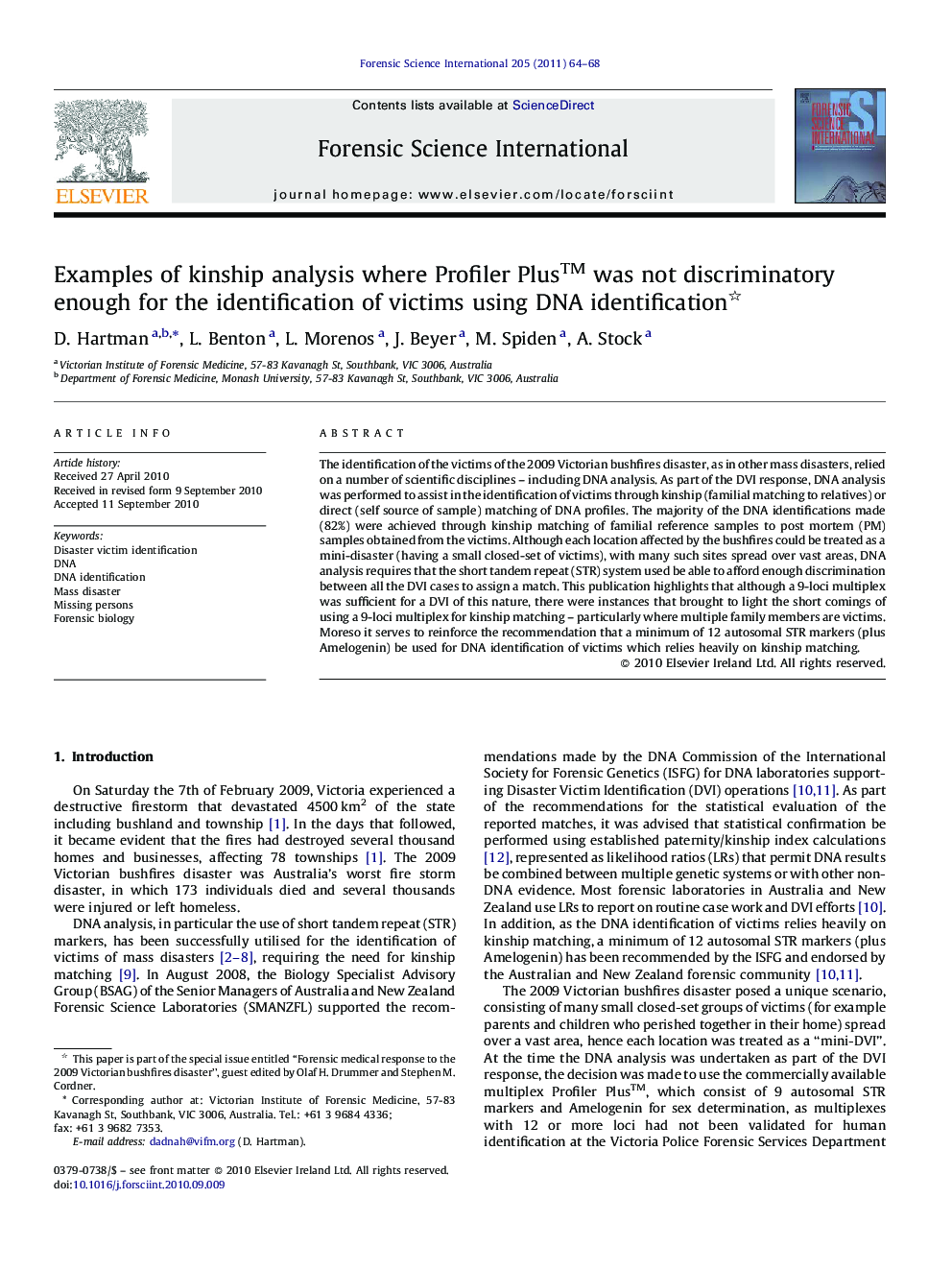| کد مقاله | کد نشریه | سال انتشار | مقاله انگلیسی | نسخه تمام متن |
|---|---|---|---|---|
| 96920 | 160475 | 2011 | 5 صفحه PDF | دانلود رایگان |

The identification of the victims of the 2009 Victorian bushfires disaster, as in other mass disasters, relied on a number of scientific disciplines – including DNA analysis. As part of the DVI response, DNA analysis was performed to assist in the identification of victims through kinship (familial matching to relatives) or direct (self source of sample) matching of DNA profiles. The majority of the DNA identifications made (82%) were achieved through kinship matching of familial reference samples to post mortem (PM) samples obtained from the victims. Although each location affected by the bushfires could be treated as a mini-disaster (having a small closed-set of victims), with many such sites spread over vast areas, DNA analysis requires that the short tandem repeat (STR) system used be able to afford enough discrimination between all the DVI cases to assign a match. This publication highlights that although a 9-loci multiplex was sufficient for a DVI of this nature, there were instances that brought to light the short comings of using a 9-loci multiplex for kinship matching – particularly where multiple family members are victims. Moreso it serves to reinforce the recommendation that a minimum of 12 autosomal STR markers (plus Amelogenin) be used for DNA identification of victims which relies heavily on kinship matching.
Journal: Forensic Science International - Volume 205, Issues 1–3, 25 February 2011, Pages 64–68